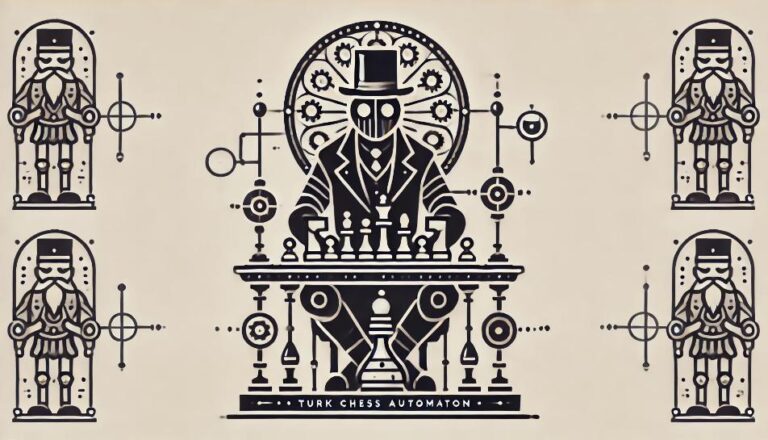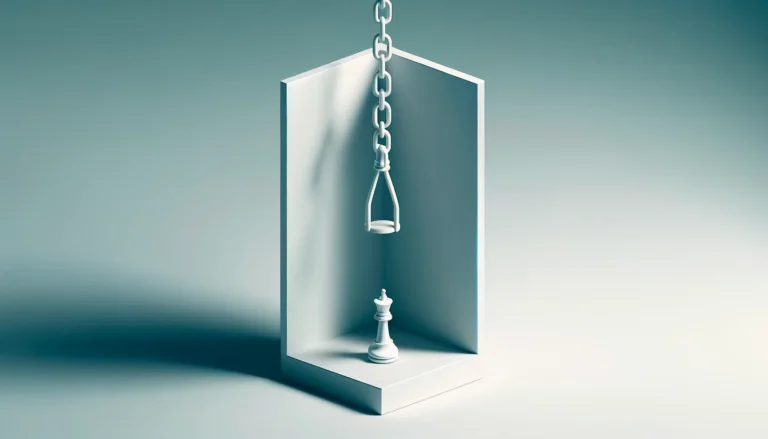The rise of female grandmasters in chess has had a significant impact on the game and the chess community as a whole. These talented players have broken through the barriers and stereotypes, inspiring young girls to pursue their passion for chess and showing that there is no limit to what they can achieve. Female grandmasters also bring a unique perspective and style of play to the game, adding diversity and richness to the chess world.
Moreover, the success of female grandmasters challenges the traditional gender roles in the sport and promotes gender equality. It also encourages the chess community to address and eliminate any barriers and biases faced by female players, creating a more inclusive and diverse environment for all.
The Impact of Female Grandmasters on the Game of Chess
The rise of female grandmasters in chess has had a significant impact on the game and the chess community as a whole. These talented players have broken through the barriers and stereotypes, inspiring young girls to pursue their passion for chess and showing that there is no limit to what they can achieve. Female grandmasters also bring a unique perspective and style of play to the game, adding diversity and richness to the chess world.
Moreover, the success of female grandmasters challenges the traditional gender roles in the sport and promotes gender equality. It also encourages the chess community to address and eliminate any barriers and biases faced by female players, creating a more inclusive and diverse environment for all.
Recently, in 2020, 31-year-old Irina Krush became the first American female player to reach the milestone of 2500 Elo rating points, the benchmark for the grandmaster title. This achievement not only solidifies her place in the history of female chess players but also challenges the notion that women are not as skilled or competitive as men in chess.
The Impact of Female Grandmasters on the Game of Chess
The rise of female grandmasters in chess has had a significant impact on the game and the chess community as a whole. These talented players have broken through the barriers and stereotypes, inspiring young girls to pursue their passion for chess and showing that there is no limit to what they can achieve. Female grandmasters also bring a unique perspective and style of play to the game, adding diversity and richness to the chess world.
Moreover, the success of female grandmasters challenges the traditional gender roles in the sport and promotes gender equality. It also encourages the chess community to address and eliminate any barriers and biases faced by female players, creating a more inclusive and diverse environment for all.
Despite these challenges, female chess players have continued to push through and make their mark in the world of chess. In 1991, Maia Chiburdanidze from Georgia became the first female grandmaster, breaking the barriers and paving the way for other talented female players. Since then, there have been numerous female grandmasters, including Judit Polgar, who became the youngest grandmaster at the age of 15, and Hou Yifan, the youngest female world champion at the age of 16.
Recently, in 2020, 31-year-old Irina Krush became the first American female player to reach the milestone of 2500 Elo rating points, the benchmark for the grandmaster title. This achievement not only solidifies her place in the history of female chess players but also challenges the notion that women are not as skilled or competitive as men in chess.
The Impact of Female Grandmasters on the Game of Chess
The rise of female grandmasters in chess has had a significant impact on the game and the chess community as a whole. These talented players have broken through the barriers and stereotypes, inspiring young girls to pursue their passion for chess and showing that there is no limit to what they can achieve. Female grandmasters also bring a unique perspective and style of play to the game, adding diversity and richness to the chess world.
Moreover, the success of female grandmasters challenges the traditional gender roles in the sport and promotes gender equality. It also encourages the chess community to address and eliminate any barriers and biases faced by female players, creating a more inclusive and diverse environment for all.
Breaking Barriers: Female Grandmasters Making History
Despite these challenges, female chess players have continued to push through and make their mark in the world of chess. In 1991, Maia Chiburdanidze from Georgia became the first female grandmaster, breaking the barriers and paving the way for other talented female players. Since then, there have been numerous female grandmasters, including Judit Polgar, who became the youngest grandmaster at the age of 15, and Hou Yifan, the youngest female world champion at the age of 16.
Recently, in 2020, 31-year-old Irina Krush became the first American female player to reach the milestone of 2500 Elo rating points, the benchmark for the grandmaster title. This achievement not only solidifies her place in the history of female chess players but also challenges the notion that women are not as skilled or competitive as men in chess.
The Impact of Female Grandmasters on the Game of Chess
The rise of female grandmasters in chess has had a significant impact on the game and the chess community as a whole. These talented players have broken through the barriers and stereotypes, inspiring young girls to pursue their passion for chess and showing that there is no limit to what they can achieve. Female grandmasters also bring a unique perspective and style of play to the game, adding diversity and richness to the chess world.
Moreover, the success of female grandmasters challenges the traditional gender roles in the sport and promotes gender equality. It also encourages the chess community to address and eliminate any barriers and biases faced by female players, creating a more inclusive and diverse environment for all.
In addition, there has been a long-standing stereotype that women are not as good at chess as men, leading to biased opinions and discrimination in the chess world. This stereotype has been perpetuated by the lower number of female players with high rankings and titles, as well as the lack of representation of female players in top-level tournaments.
Breaking Barriers: Female Grandmasters Making History
Despite these challenges, female chess players have continued to push through and make their mark in the world of chess. In 1991, Maia Chiburdanidze from Georgia became the first female grandmaster, breaking the barriers and paving the way for other talented female players. Since then, there have been numerous female grandmasters, including Judit Polgar, who became the youngest grandmaster at the age of 15, and Hou Yifan, the youngest female world champion at the age of 16.
Recently, in 2020, 31-year-old Irina Krush became the first American female player to reach the milestone of 2500 Elo rating points, the benchmark for the grandmaster title. This achievement not only solidifies her place in the history of female chess players but also challenges the notion that women are not as skilled or competitive as men in chess.
The Impact of Female Grandmasters on the Game of Chess
The rise of female grandmasters in chess has had a significant impact on the game and the chess community as a whole. These talented players have broken through the barriers and stereotypes, inspiring young girls to pursue their passion for chess and showing that there is no limit to what they can achieve. Female grandmasters also bring a unique perspective and style of play to the game, adding diversity and richness to the chess world.
Moreover, the success of female grandmasters challenges the traditional gender roles in the sport and promotes gender equality. It also encourages the chess community to address and eliminate any barriers and biases faced by female players, creating a more inclusive and diverse environment for all.
Throughout history, female chess players have faced numerous barriers in their pursuit of excellence. One significant barrier is the lack of support and recognition from the chess community, with many female players not receiving the same level of coaching, sponsorship, and media attention as their male counterparts. This often results in fewer opportunities for female players to develop their skills and reach their full potential.
In addition, there has been a long-standing stereotype that women are not as good at chess as men, leading to biased opinions and discrimination in the chess world. This stereotype has been perpetuated by the lower number of female players with high rankings and titles, as well as the lack of representation of female players in top-level tournaments.
Breaking Barriers: Female Grandmasters Making History
Despite these challenges, female chess players have continued to push through and make their mark in the world of chess. In 1991, Maia Chiburdanidze from Georgia became the first female grandmaster, breaking the barriers and paving the way for other talented female players. Since then, there have been numerous female grandmasters, including Judit Polgar, who became the youngest grandmaster at the age of 15, and Hou Yifan, the youngest female world champion at the age of 16.
Recently, in 2020, 31-year-old Irina Krush became the first American female player to reach the milestone of 2500 Elo rating points, the benchmark for the grandmaster title. This achievement not only solidifies her place in the history of female chess players but also challenges the notion that women are not as skilled or competitive as men in chess.
The Impact of Female Grandmasters on the Game of Chess
The rise of female grandmasters in chess has had a significant impact on the game and the chess community as a whole. These talented players have broken through the barriers and stereotypes, inspiring young girls to pursue their passion for chess and showing that there is no limit to what they can achieve. Female grandmasters also bring a unique perspective and style of play to the game, adding diversity and richness to the chess world.
Moreover, the success of female grandmasters challenges the traditional gender roles in the sport and promotes gender equality. It also encourages the chess community to address and eliminate any barriers and biases faced by female players, creating a more inclusive and diverse environment for all.
Barriers Faced by Female Chess Players
Throughout history, female chess players have faced numerous barriers in their pursuit of excellence. One significant barrier is the lack of support and recognition from the chess community, with many female players not receiving the same level of coaching, sponsorship, and media attention as their male counterparts. This often results in fewer opportunities for female players to develop their skills and reach their full potential.
In addition, there has been a long-standing stereotype that women are not as good at chess as men, leading to biased opinions and discrimination in the chess world. This stereotype has been perpetuated by the lower number of female players with high rankings and titles, as well as the lack of representation of female players in top-level tournaments.
Breaking Barriers: Female Grandmasters Making History
Despite these challenges, female chess players have continued to push through and make their mark in the world of chess. In 1991, Maia Chiburdanidze from Georgia became the first female grandmaster, breaking the barriers and paving the way for other talented female players. Since then, there have been numerous female grandmasters, including Judit Polgar, who became the youngest grandmaster at the age of 15, and Hou Yifan, the youngest female world champion at the age of 16.
Recently, in 2020, 31-year-old Irina Krush became the first American female player to reach the milestone of 2500 Elo rating points, the benchmark for the grandmaster title. This achievement not only solidifies her place in the history of female chess players but also challenges the notion that women are not as skilled or competitive as men in chess.
The Impact of Female Grandmasters on the Game of Chess
The rise of female grandmasters in chess has had a significant impact on the game and the chess community as a whole. These talented players have broken through the barriers and stereotypes, inspiring young girls to pursue their passion for chess and showing that there is no limit to what they can achieve. Female grandmasters also bring a unique perspective and style of play to the game, adding diversity and richness to the chess world.
Moreover, the success of female grandmasters challenges the traditional gender roles in the sport and promotes gender equality. It also encourages the chess community to address and eliminate any barriers and biases faced by female players, creating a more inclusive and diverse environment for all.
In the 1960s and 1970s, the concept of a Women´s World Chess Championship was established, which allowed for more opportunities for female players to compete against each other. However, this also led to the segregation of women in chess, with many top female players not being able to compete in male-dominated events or to achieve the title of Grandmaster.
Barriers Faced by Female Chess Players
Throughout history, female chess players have faced numerous barriers in their pursuit of excellence. One significant barrier is the lack of support and recognition from the chess community, with many female players not receiving the same level of coaching, sponsorship, and media attention as their male counterparts. This often results in fewer opportunities for female players to develop their skills and reach their full potential.
In addition, there has been a long-standing stereotype that women are not as good at chess as men, leading to biased opinions and discrimination in the chess world. This stereotype has been perpetuated by the lower number of female players with high rankings and titles, as well as the lack of representation of female players in top-level tournaments.
Breaking Barriers: Female Grandmasters Making History
Despite these challenges, female chess players have continued to push through and make their mark in the world of chess. In 1991, Maia Chiburdanidze from Georgia became the first female grandmaster, breaking the barriers and paving the way for other talented female players. Since then, there have been numerous female grandmasters, including Judit Polgar, who became the youngest grandmaster at the age of 15, and Hou Yifan, the youngest female world champion at the age of 16.
Recently, in 2020, 31-year-old Irina Krush became the first American female player to reach the milestone of 2500 Elo rating points, the benchmark for the grandmaster title. This achievement not only solidifies her place in the history of female chess players but also challenges the notion that women are not as skilled or competitive as men in chess.
The Impact of Female Grandmasters on the Game of Chess
The rise of female grandmasters in chess has had a significant impact on the game and the chess community as a whole. These talented players have broken through the barriers and stereotypes, inspiring young girls to pursue their passion for chess and showing that there is no limit to what they can achieve. Female grandmasters also bring a unique perspective and style of play to the game, adding diversity and richness to the chess world.
Moreover, the success of female grandmasters challenges the traditional gender roles in the sport and promotes gender equality. It also encourages the chess community to address and eliminate any barriers and biases faced by female players, creating a more inclusive and diverse environment for all.
The first known female chess player was a woman named Polgar, who lived in the 12th century. However, it was not until the 19th century that women officially began to compete in chess tournaments. The first female player to compete in a male-dominated event was Vera Menchik, who became the first Women´s World Chess Champion in 1927. Despite facing discrimination and not being taken seriously by her male counterparts, Menchik´s success paved the way for future female players.
In the 1960s and 1970s, the concept of a Women´s World Chess Championship was established, which allowed for more opportunities for female players to compete against each other. However, this also led to the segregation of women in chess, with many top female players not being able to compete in male-dominated events or to achieve the title of Grandmaster.
Barriers Faced by Female Chess Players
Throughout history, female chess players have faced numerous barriers in their pursuit of excellence. One significant barrier is the lack of support and recognition from the chess community, with many female players not receiving the same level of coaching, sponsorship, and media attention as their male counterparts. This often results in fewer opportunities for female players to develop their skills and reach their full potential.
In addition, there has been a long-standing stereotype that women are not as good at chess as men, leading to biased opinions and discrimination in the chess world. This stereotype has been perpetuated by the lower number of female players with high rankings and titles, as well as the lack of representation of female players in top-level tournaments.
Breaking Barriers: Female Grandmasters Making History
Despite these challenges, female chess players have continued to push through and make their mark in the world of chess. In 1991, Maia Chiburdanidze from Georgia became the first female grandmaster, breaking the barriers and paving the way for other talented female players. Since then, there have been numerous female grandmasters, including Judit Polgar, who became the youngest grandmaster at the age of 15, and Hou Yifan, the youngest female world champion at the age of 16.
Recently, in 2020, 31-year-old Irina Krush became the first American female player to reach the milestone of 2500 Elo rating points, the benchmark for the grandmaster title. This achievement not only solidifies her place in the history of female chess players but also challenges the notion that women are not as skilled or competitive as men in chess.
The Impact of Female Grandmasters on the Game of Chess
The rise of female grandmasters in chess has had a significant impact on the game and the chess community as a whole. These talented players have broken through the barriers and stereotypes, inspiring young girls to pursue their passion for chess and showing that there is no limit to what they can achieve. Female grandmasters also bring a unique perspective and style of play to the game, adding diversity and richness to the chess world.
Moreover, the success of female grandmasters challenges the traditional gender roles in the sport and promotes gender equality. It also encourages the chess community to address and eliminate any barriers and biases faced by female players, creating a more inclusive and diverse environment for all.
The History of Female Chess Players
The first known female chess player was a woman named Polgar, who lived in the 12th century. However, it was not until the 19th century that women officially began to compete in chess tournaments. The first female player to compete in a male-dominated event was Vera Menchik, who became the first Women´s World Chess Champion in 1927. Despite facing discrimination and not being taken seriously by her male counterparts, Menchik´s success paved the way for future female players.
In the 1960s and 1970s, the concept of a Women´s World Chess Championship was established, which allowed for more opportunities for female players to compete against each other. However, this also led to the segregation of women in chess, with many top female players not being able to compete in male-dominated events or to achieve the title of Grandmaster.
Barriers Faced by Female Chess Players
Throughout history, female chess players have faced numerous barriers in their pursuit of excellence. One significant barrier is the lack of support and recognition from the chess community, with many female players not receiving the same level of coaching, sponsorship, and media attention as their male counterparts. This often results in fewer opportunities for female players to develop their skills and reach their full potential.
In addition, there has been a long-standing stereotype that women are not as good at chess as men, leading to biased opinions and discrimination in the chess world. This stereotype has been perpetuated by the lower number of female players with high rankings and titles, as well as the lack of representation of female players in top-level tournaments.
Breaking Barriers: Female Grandmasters Making History
Despite these challenges, female chess players have continued to push through and make their mark in the world of chess. In 1991, Maia Chiburdanidze from Georgia became the first female grandmaster, breaking the barriers and paving the way for other talented female players. Since then, there have been numerous female grandmasters, including Judit Polgar, who became the youngest grandmaster at the age of 15, and Hou Yifan, the youngest female world champion at the age of 16.
Recently, in 2020, 31-year-old Irina Krush became the first American female player to reach the milestone of 2500 Elo rating points, the benchmark for the grandmaster title. This achievement not only solidifies her place in the history of female chess players but also challenges the notion that women are not as skilled or competitive as men in chess.
The Impact of Female Grandmasters on the Game of Chess
The rise of female grandmasters in chess has had a significant impact on the game and the chess community as a whole. These talented players have broken through the barriers and stereotypes, inspiring young girls to pursue their passion for chess and showing that there is no limit to what they can achieve. Female grandmasters also bring a unique perspective and style of play to the game, adding diversity and richness to the chess world.
Moreover, the success of female grandmasters challenges the traditional gender roles in the sport and promotes gender equality. It also encourages the chess community to address and eliminate any barriers and biases faced by female players, creating a more inclusive and diverse environment for all.
Chess has long been considered a male-dominated sport, with the most prestigious competitions, such as the World Chess Championship, dominated by male players. However, in recent years, there has been a significant increase in the number of talented female chess players making waves in the chess community, with some even achieving the prestigious title of Grandmaster. In this article, we will explore the history of female chess players and the barriers they have faced in the world of chess. We will also delve into the achievements of female grandmasters and the impact they are making on the game.
The History of Female Chess Players
The first known female chess player was a woman named Polgar, who lived in the 12th century. However, it was not until the 19th century that women officially began to compete in chess tournaments. The first female player to compete in a male-dominated event was Vera Menchik, who became the first Women´s World Chess Champion in 1927. Despite facing discrimination and not being taken seriously by her male counterparts, Menchik´s success paved the way for future female players.
In the 1960s and 1970s, the concept of a Women´s World Chess Championship was established, which allowed for more opportunities for female players to compete against each other. However, this also led to the segregation of women in chess, with many top female players not being able to compete in male-dominated events or to achieve the title of Grandmaster.
Barriers Faced by Female Chess Players
Throughout history, female chess players have faced numerous barriers in their pursuit of excellence. One significant barrier is the lack of support and recognition from the chess community, with many female players not receiving the same level of coaching, sponsorship, and media attention as their male counterparts. This often results in fewer opportunities for female players to develop their skills and reach their full potential.
In addition, there has been a long-standing stereotype that women are not as good at chess as men, leading to biased opinions and discrimination in the chess world. This stereotype has been perpetuated by the lower number of female players with high rankings and titles, as well as the lack of representation of female players in top-level tournaments.
Breaking Barriers: Female Grandmasters Making History
Despite these challenges, female chess players have continued to push through and make their mark in the world of chess. In 1991, Maia Chiburdanidze from Georgia became the first female grandmaster, breaking the barriers and paving the way for other talented female players. Since then, there have been numerous female grandmasters, including Judit Polgar, who became the youngest grandmaster at the age of 15, and Hou Yifan, the youngest female world champion at the age of 16.
Recently, in 2020, 31-year-old Irina Krush became the first American female player to reach the milestone of 2500 Elo rating points, the benchmark for the grandmaster title. This achievement not only solidifies her place in the history of female chess players but also challenges the notion that women are not as skilled or competitive as men in chess.
The Impact of Female Grandmasters on the Game of Chess
The rise of female grandmasters in chess has had a significant impact on the game and the chess community as a whole. These talented players have broken through the barriers and stereotypes, inspiring young girls to pursue their passion for chess and showing that there is no limit to what they can achieve. Female grandmasters also bring a unique perspective and style of play to the game, adding diversity and richness to the chess world.
Moreover, the success of female grandmasters challenges the traditional gender roles in the sport and promotes gender equality. It also encourages the chess community to address and eliminate any barriers and biases faced by female players, creating a more inclusive and diverse environment for all.
Introduction
Chess has long been considered a male-dominated sport, with the most prestigious competitions, such as the
World Chess Championship, dominated by male players. However, in recent years, there has been a significant increase in the number of talented female chess players making waves in the chess community, with some even achieving the prestigious title of Grandmaster. In this article, we will explore the history of female chess players and the barriers they have faced in the world of chess. We will also delve into the achievements of female grandmasters and the impact they are making on the game.
The History of Female Chess Players
The first known female chess player was a woman named Polgar, who lived in the 12th century. However, it was not until the 19th century that women officially began to compete in chess tournaments. The first female player to compete in a male-dominated event was Vera Menchik, who became the first Women´s World Chess Champion in 1927. Despite facing discrimination and not being taken seriously by her male counterparts, Menchik´s success paved the way for future female players.
In the 1960s and 1970s, the concept of a Women´s World Chess Championship was established, which allowed for more opportunities for female players to compete against each other. However, this also led to the segregation of women in chess, with many top female players not being able to compete in male-dominated events or to achieve the title of Grandmaster.
Barriers Faced by Female Chess Players
Throughout history, female chess players have faced numerous barriers in their pursuit of excellence. One significant barrier is the lack of support and recognition from the chess community, with many female players not receiving the same level of coaching, sponsorship, and media attention as their male counterparts. This often results in fewer opportunities for female players to develop their skills and reach their full potential.
In addition, there has been a long-standing stereotype that women are not as good at chess as men, leading to biased opinions and discrimination in the chess world. This stereotype has been perpetuated by the lower number of female players with high rankings and titles, as well as the lack of representation of female players in top-level tournaments.
Breaking Barriers: Female Grandmasters Making History
Despite these challenges, female chess players have continued to push through and make their mark in the world of chess. In 1991, Maia Chiburdanidze from Georgia became the first female grandmaster, breaking the barriers and paving the way for other talented female players. Since then, there have been numerous female grandmasters, including Judit Polgar, who became the youngest grandmaster at the age of 15, and Hou Yifan, the youngest female world champion at the age of 16.
Recently, in 2020, 31-year-old Irina Krush became the first American female player to reach the milestone of 2500 Elo rating points, the benchmark for the grandmaster title. This achievement not only solidifies her place in the history of female chess players but also challenges the notion that women are not as skilled or competitive as men in chess.
The Impact of Female Grandmasters on the Game of Chess
The rise of female grandmasters in chess has had a significant impact on the game and the chess community as a whole. These talented players have broken through the barriers and stereotypes, inspiring young girls to pursue their passion for chess and showing that there is no limit to what they can achieve. Female grandmasters also bring a unique perspective and style of play to the game, adding diversity and richness to the chess world.
Moreover, the success of female grandmasters challenges the traditional gender roles in the sport and promotes gender equality. It also encourages the chess community to address and eliminate any barriers and biases faced by female players, creating a more inclusive and diverse environment for all.





